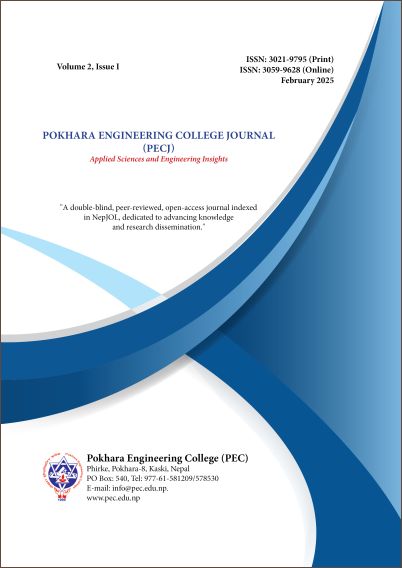Welded Connections in Structural Engineering: A Comparative Study of Design Standards
DOI:
https://doi.org/10.3126/pecj.v2i1.76826Keywords:
Fillet welds, Filler metal, Base metal, Load bearing capacity, weld directionAbstract
This paper comprehensively reviews analytical approaches for designing welded connections based on established design standards, including European, US, and Indian standards. The study emphasizes the behaviour of fillet welds under various load directions, demonstrating that their strength depends significantly on the orientation of the applied forces. Through detailed analysis of design guidelines and independent research, this review highlights the directional and mean stress methods in European standards, the Load and Resistance Factor Design (LRFD) and Allowable Stress Design (ASD) in US standards and Indian standards. The findings offer a comparative perspective on welded connections' load-bearing capacity and resistance factors, providing valuable insights such as guidance on selecting standards based on loading conditions and material strength considerations for safer and cost-effective welded connections.
Downloads
Downloads
Published
How to Cite
Issue
Section
License
Copyright (c) 2025 Pokhara Engineering College

This work is licensed under a Creative Commons Attribution-NonCommercial 4.0 International License.
This license enables reusers to distribute, remix, adapt, and build upon the material in any medium or format for noncommercial purposes only, and only so long as attribution is given to the creator.




